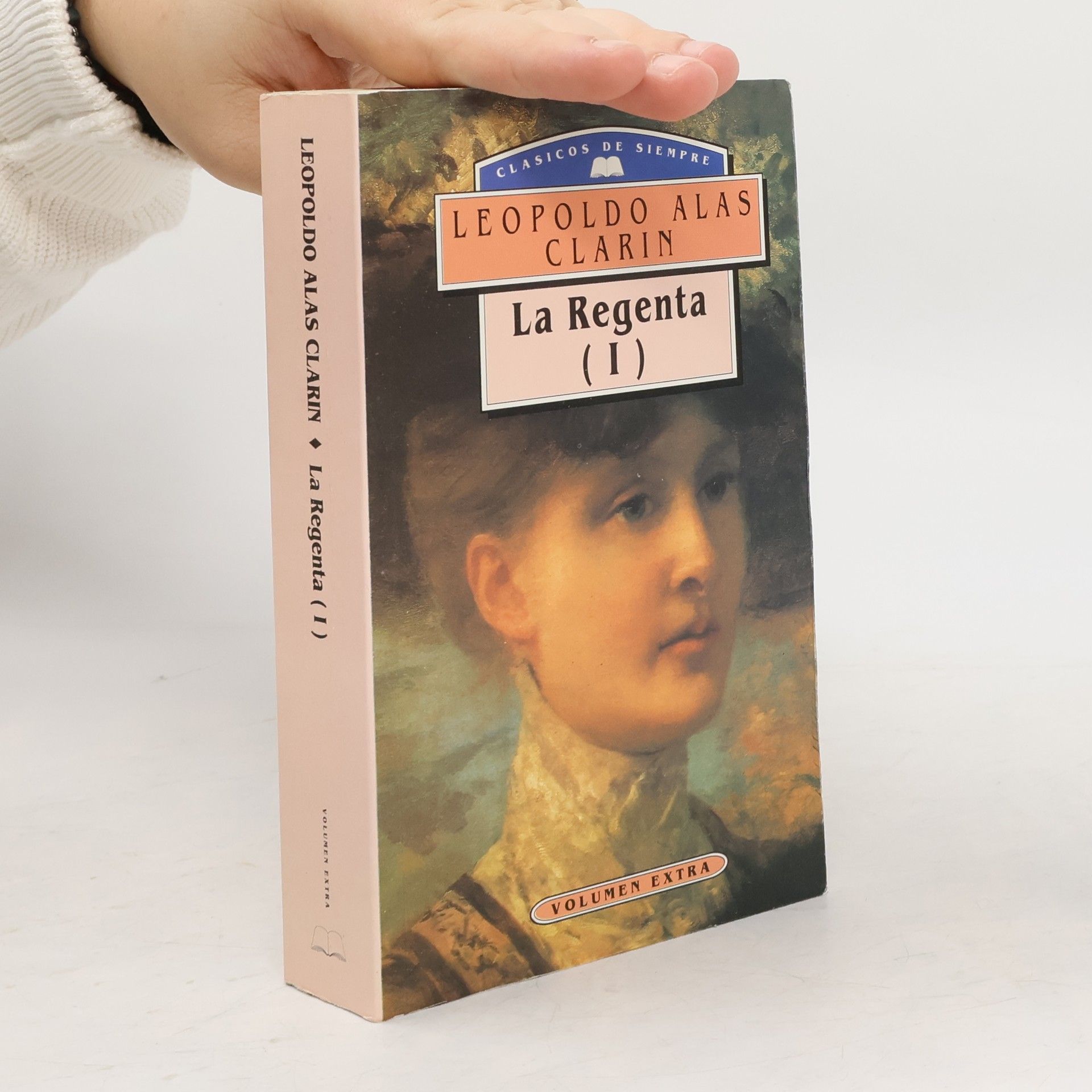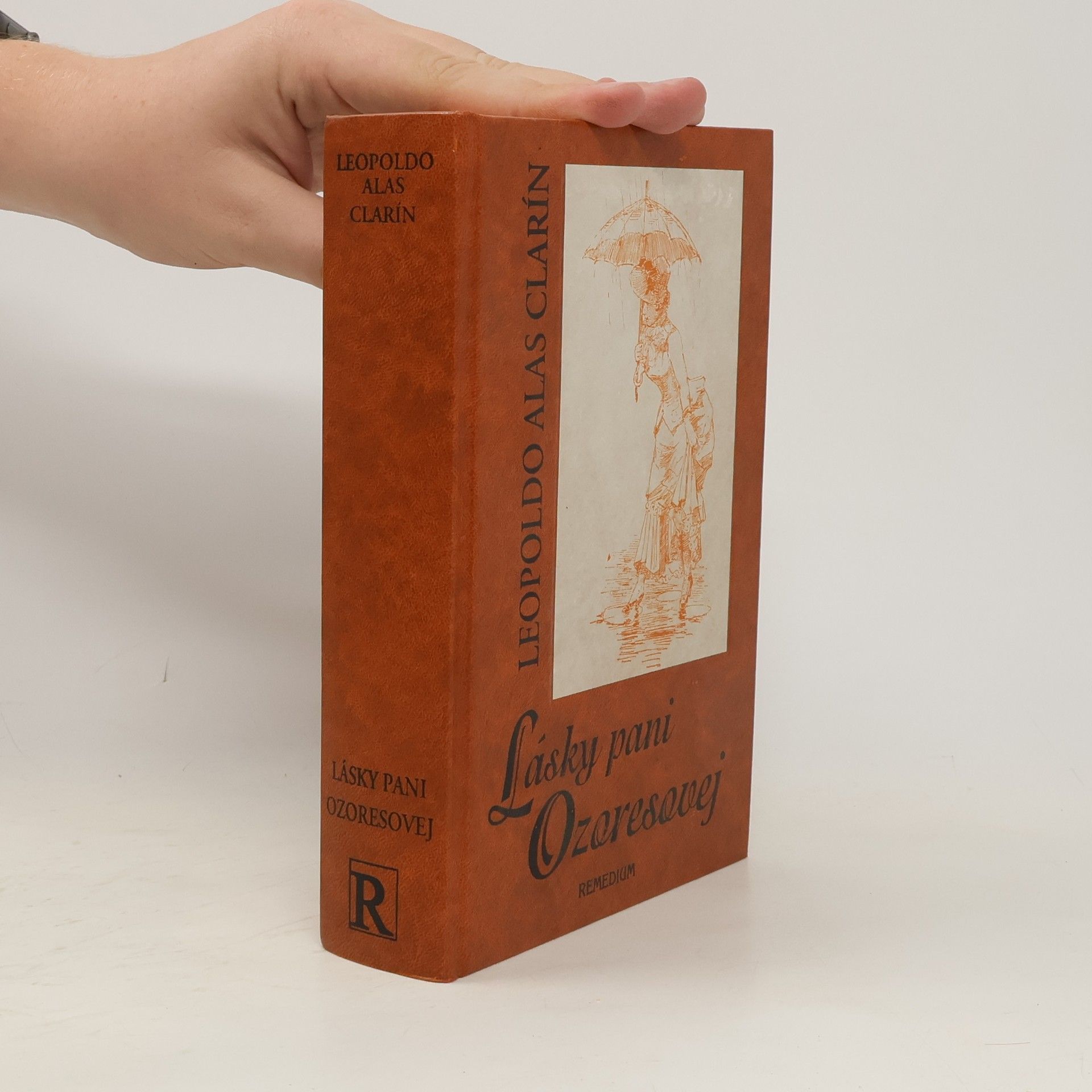La Regenta; Volume 1
- 504pages
- 18 heures de lecture
Leopoldo García-Alas, connu sous le nom de plume Clarín, fut une figure majeure du réalisme espagnol. Ses romans explorent les complexités de la vie provinciale et de la psychologie collective, employant des techniques narratives sophistiquées telles que le monologue intérieur et le style indirect libre pour immerger les lecteurs dans l'intimité de ses personnages. Influencé par le Naturalisme et le Krausisme, l'œuvre de Clarín aborde souvent des thèmes profonds comme l'humanisme et la quête spirituelle, faisant de son écriture un terreau fertile pour diverses interprétations et consolidant son héritage de maître conteur.







Ústrednou témou prvého slovenského prekladu románu významného predstaviteľa španielskeho realizmu 19. storočia je cudzoložstvo. Protagonistkou je krásna Anna Ozoresová, dcéra schudobneného šľachtica a talianskej modistky, ktorá zanechá štvorročnú dcérku. Autor situoval dej do Staromesta (v skutočnosti hlavného mesta astúrskej provincie Ovieda). Po nevinnom priateľstve s rybárskym chlapcom Annu nespravodlivo podozrievajú zo skazenosti. Dospievajúca hrdinka prežíva krízu, ale márne hľadá útechu v čítaní náboženskej literatúry a v pohrúžení sa do náboženskej mystiky. Preložil Vladimír Oleríny.
Mladá, krásná a počestná Ana Ozoresová se v manželství se starým soudcem cítí zklamána ve svých erotických a mateřských touhách a hledá naplnění svého života v jiném vztahu. Děj příběhu se odehrává od října 1875 do října 1978 ve společnosti hlavního města provincie Vetusty. Drama je zasazeno do prostředí španělské šlechty atakované již novou buržoazně orientovanou aristokracií.
With its frank sexuality and searing critique of the Church, "La Regenta" scandalized contemporary Spain when it was first published in 1885. Married to the retired magistrate of Vetusta, Ana Ozores cares deeply for her much older husband but feels stifled by the monotony of her life in the shabby and conservative provincial town. When she embarks on a quest for fulfillment through religion and even adultery, a bitter struggle begins between a powerful priest and a would-be Don Juan for the passionate young womanas body and soul. Spainas answer to "Madame Bovary, La Regenta" wittily depicts the complacent and frivolous world of the upper class.
Adiós cordera y otros cuentos Leopoldo Alas, escritor español (1852-1901) Este libro electrónico presenta «Adiós cordera y otros cuentos», de Leopoldo Alas, en texto completo. Un índice interactivo permite acceder directamente al capítulo seleccionado. Índice interactivo -01- Presentación -02- ADIÓS, CORDERA -03- EL SEÑOR -04- CAMBIO DE LUZ -05- EL CENTAURO -06- RIVALES -07- PROTESTO -08- LA YERNOCRACIA -09- UN VIEJO VERDE -10- CUENTO FUTURO -11- UN JORNALERO -12- BENEDICTINO -13- LA RONCA -14- LA ROSA DE ORO
-Doña Berta-El señor-¡Adiós Cordera!-Cambio de luz-El centauro-Rivales-Protesto-La yernocracia-Un viejo verde-Cuento futuro